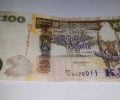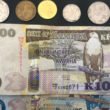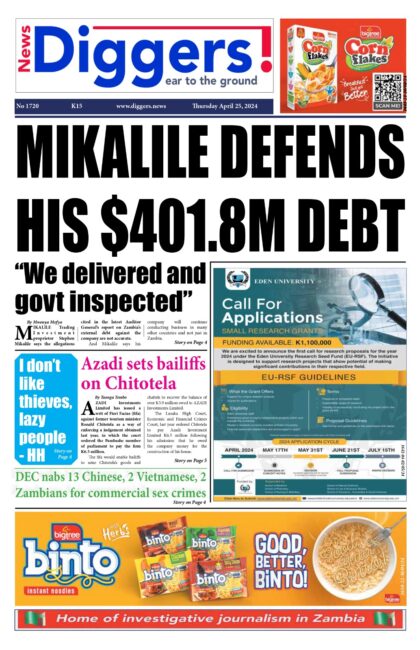THE kwacha has depreciated to hit the K15.00 per dollar barrier for the second time in less than four months, owing to a sustained high demand for the greenback on the local market, compounded with little supply.
According to financial market players, the kwacha maintained a weak position, depreciating to breach and crash through the K15.00 per dollar mark, continuing its depreciating trend to now average K15.00 per dollar from averaging around K14.70 per dollar since the start of the New Year.
At the end of last year, the local unit depreciated to its worst-ever point to an average K15.31 per dollar.
In its Treasury market update by the end of February, FNB Zambia noted that the kwacha’s losses had been triggered by continued dollar demand, defying earlier expectations of a kwacha rally amidst the usual month-end conversions by corporates to meet local statutory obligations.
“The local unit continues to slip against the dollar. During Thursday’s trading session, dollar demand took hold of the market with what looked like majority of the demand coming from offshore players. The psychological barrier of USD/ZMW15.00 was broken. Exporters are now holding back from converting dollars with the view that the kwacha will continue to lose ground and, thus, maximize on their kwacha returns. There still seems to be some dollar demand on the local market. Being the last day of the month, we are of the view that month-end conversions have been made, which could see the local unit trade on the back-foot,” FNB stated in its daily market update, Friday.
It stated that huge dollar demand emanated from within the agricultural sector during the last week of February.
“The local unit lost its footing against the greenback during Wednesday’s trading session. Dollar demand dictated the market with what we believe was demand coming from the agricultural sector. USD/ZMW opened at K14.72/14/77 and gradually weakened to K14.85/14.90 where the market closed despite increased dollar flows. Nevertheless, the kwacha could hold ground at the current levels given dollar conversions for month-end obligations,” FNB had earlier stated in a separate market update, Thursday.
And Cavmont Bank stated in its market report that the kwacha would likely trade above the K15 per dollar mark if supply remained weak going into March.
“The kwacha continued to move lower against the U.S dollar on Thursday as supply from exporters waned further. The local unit began the day trading at K14.85/K14.90, but was later seen quoted at K15.05/K15.10 by midday, with a number of interbank players seen protecting their offer side. Despite the downside movement, activity from importers and buyers was largely low as most were still anticipating a rebound in the local unit. In the absence of improved inflows, the kwacha is likely to establish a new equilibrium level above the $1/K15.00,” stated Cavmont.
The local currency’s continued depreciation comes in the wake of expensive electricity and fertilizer imports into the country last November, which are expected to be ongoing in the short-term future.











